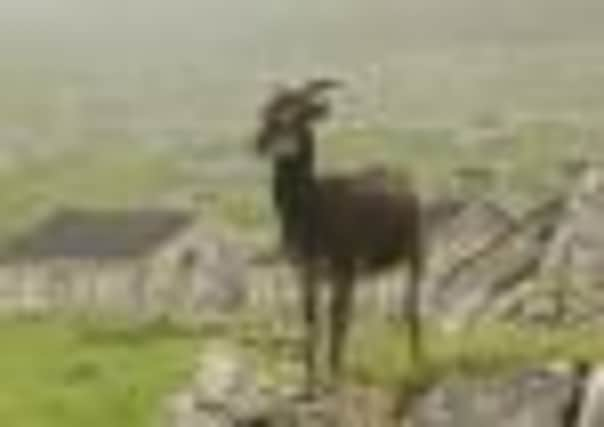Wild and rare, the ancient Soay sheep of St Kilda are under threat


Severe winter storms and food shortage are being blamed for wiping out more than 1,000 of the sheep on St Kilda.
The “population crash” on the islands could see up to 60 per cent of the 2,000-plus wild Soay sheep dying on the remote outpost.
Advertisement
Hide AdAdvertisement
Hide AdThe prediction is being made by the National Trust for Scotland (NTS), which manages St Kilda, the remotest part of the British Isles, 41 miles west of the Western Isles.
The mass deaths are being put down to the severe winter weather, a lack of grass and old age in some of the population, which had been at one of its highest recorded levels. The onslaught of gales and poor feeding has left many sheep, particularly pregnant ewes, severely malnourished.
Dr Richard Luxmoore, senior nature conservation adviser for the NTS, said: “The Soay sheep of St Kilda are treated as wild animals and, as such, are subject to natural mortality.
“It is normal for sheep to die towards the end of the winter, because they tend to be at their lowest nutritional status, having survived for several months with poor grazing and being subject to additional demands of pregnancy.
“The sheep population has been studied for many years by researchers from Edinburgh and Cambridge universities and it has been shown they undergo fairly regular fluctuations, building up to high numbers over several years and then suffering a population ‘crash’ with heavy mortality, which returns the population to a more normal level.
“We have been anticipating a population crash for several years, as the numbers had built up to very high levels.
“It is not known precisely what precipitates a crash, but it is thought to be associated with weather conditions. The wet, windy weather this spring may have been a contributory factor.”
Dr Luxmoore said the Soay were thought to be closely related to some of the earliest sheep domesticated in Europe and were “a very valuable resource”.
Advertisement
Hide AdAdvertisement
Hide AdHe added: “The fact that they are subject to natural mortality ensures the wild traits associated with survival under difficult conditions are maintained. Domesticated sheep tend to lose these traits.
“The mortality is a natural feature in a wild population and important in conserving this unique, primitive breed.”
The origins of the Soay sheep are uncertain, but it is thought they could be the most primitive form of domestic sheep, possibly dating back 4,000 years.
NTS evidence suggests that they came with the first human settlers during the Bronze Age. The old Norse name Sauda-ey means “island of sheep”, so they were present on the island of Soay in the St Kilda archipelago in the Viking times of the ninth and tenth centuries. When the human population was evacuated in 1930, the Soay remained.
Until 1932, when a flock of 107 Soays was rounded up and moved on to the island of Hirta, pure-bred, short-tailed Soays were only found on the island.
Today, there are flocks in farms around the world, but unmanaged flocks remain on Soay and Hirta, where populations have fluctuated since scientists began studying them in the 1950s.
The breed is listed in “Category 4: At Risk” by the Rare Breeds Survival Trust because of its low numbers.